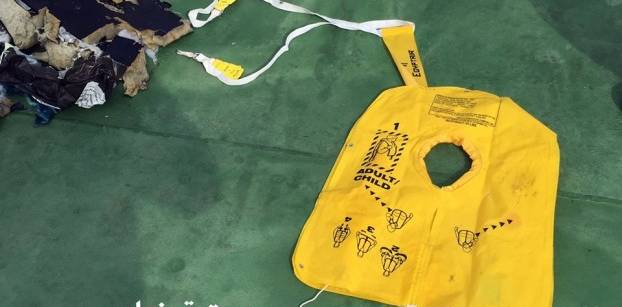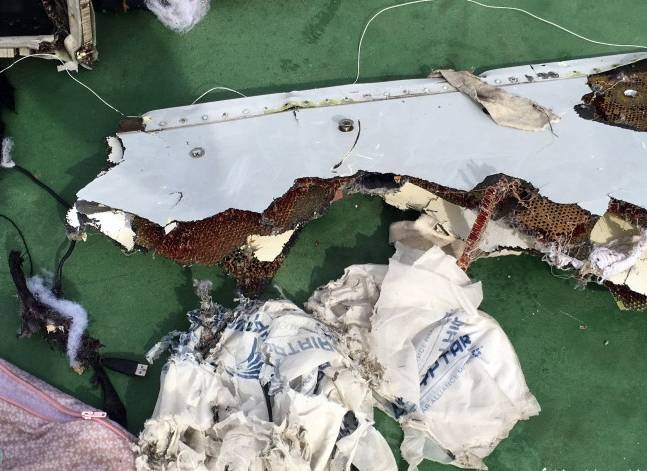Latest NEWS
- Aswat Masriya, the last word
- Roundup of Egypt's press headlines on March 15, 2017
- Roundup of Egypt's press headlines on March 14, 2017
- Former Egyptian President Hosni Mubarak to be released: lawyer
- Roundup of Egypt's press headlines on March 13, 2017
- Egypt's capital set to grow by half a million in 2017
- Egypt's wheat reserves to double with start of harvest -supply min
- Roundup of Egypt's press headlines on March 12, 2017
Egyptian investigators say EgyptAir black boxes to stop emitting signals June 24
Recovered debris from an EgyptAir plane that crashed on May 19, 2016 into the Mediterranean Sea. Handout image released by the Egyptian military
CAIRO, Jun 14 (Reuters) - The flight data recorders from an EgyptAir jet that crashed in the Mediterranean last month are expected to stop emitting signals on June 24, and search boats are working against the clock to retrieve them, Egyptian investigators said on Monday.
Without the "black boxes", investigators say there is not enough information to explain why flight MS804 crashed on May 19, killing all 66 people on board.
The Egyptian-led investigation committee said in a statement that it had accepted a request by the United States' National Transportation Safety Board (NTSB) to have a representative join the investigation team.
The plane's engines were built by a consortium led by the U.S. firm Pratt & Whitney. The country where the engines were built is often invited to take part in an air crash investigation, although it is not compulsory.
Investigators also said on Monday that radar imagery obtained from the Egyptian military confirmed previous reports based on Greek and British radar data indicating that the plane had swerved in mid-air before crashing.
Egyptian Air Navigation had previously said that the plane suddenly disappeared off the radar at cruising altitude around 37,000 feet. Those comments contradicted the Greek defence minister's account on the day of the crash that the plane had turned sharply to the left, then 360 degrees to the right before disappearing from radar at 15,000 feet.
That conclusion is important, said one aviation source, because it goes some way to excluding the possibility that the plane was brought down by a mid-air explosion.
France's air accident investigation agency, the BEA, which is advising Egypt on the underwater search, has said that one of the search ships has continued to pick up locator signals from one black box, whose position has been narrowed to within 1 to 2 km (just over a mile).
To recover the black boxes from the seabed, 3,000 metres below the surface, investigators will need to pinpoint the signals to within a few metres and establish whether the pingers are still connected to the recorders.
(Reporting by Eric Knecht and Lin Noueihed in Cairo and Tim Hepher in Paris; Editing by Kevin Liffey)














